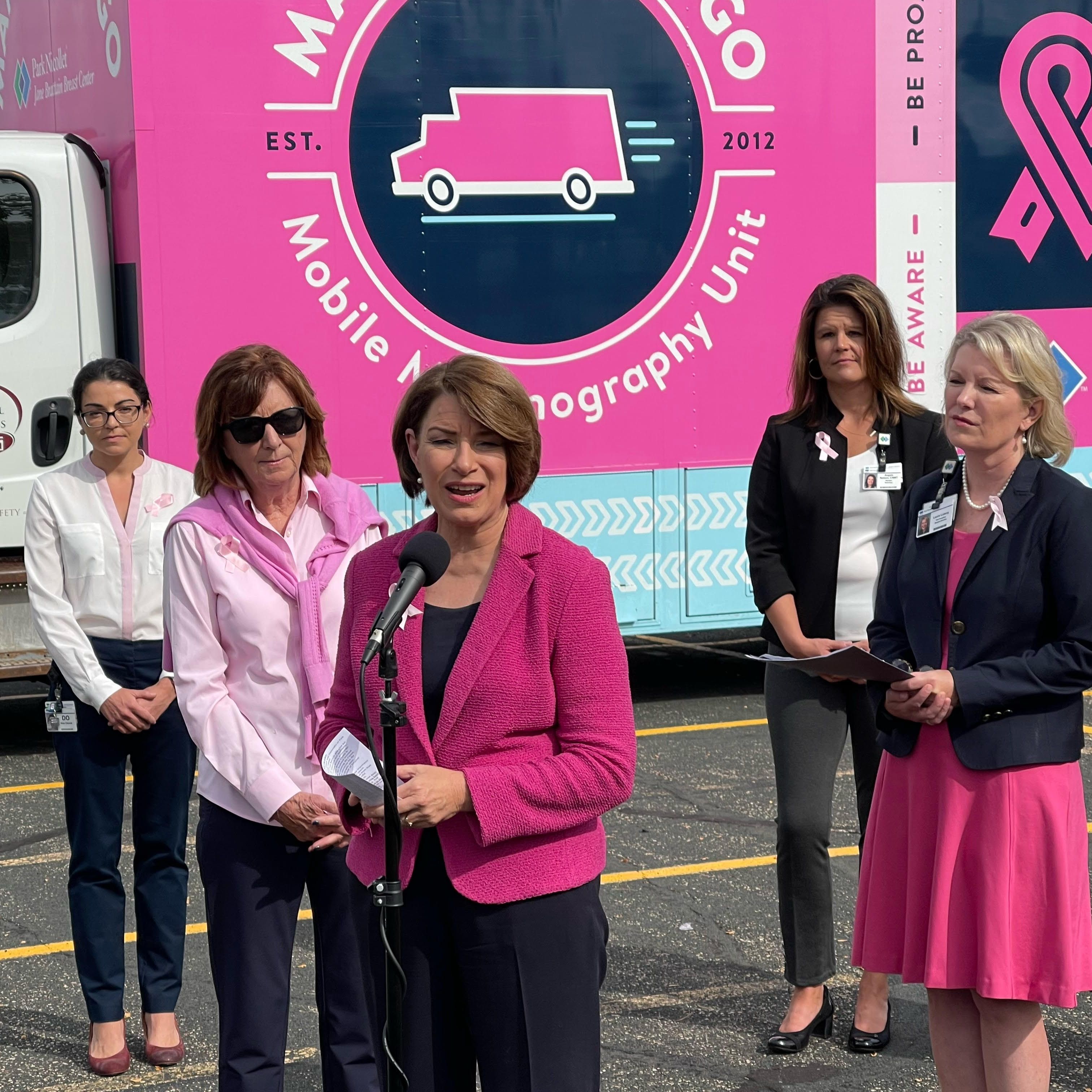The High Price of Living With Chronic Pain
Three women open up about how their conditions impact their bodies—and their wallets.

You might never guess it, but chronic pain impacts 21.7 percent of women in the United States. We’re talking the spectrum of I don’t want to get out of bed to I can’t take it anymore—near-daily for months or longer. These are women you work with, see at the gym, pass going into the grocery store—maybe one of them is even you. And on top of the obvious physical and mental strain, chronic pain is literally costing them.
We spoke with three women who know firsthand just how big that financial toll is. Consider their stories a reminder that you never know what life may throw at you when it comes to your health. It’s never too late to learn more about your health insurance coverage (especially if you’ve recently started a new job!) or start an emergency fund to pay for unexpected medical expenses.
Shelling out cash in search of a solution

When Shelley Smith, 38, started feeling fatigue and joint pain right after her son was born 11 years ago, she didn’t know what was going on. “I bounced around from doctor to doctor for a year-and-a-half until I was finally diagnosed with [chronic] Lyme disease,” she says. Shelley was ultimately also diagnosed with fibromyalgia (a condition that causes widespread pain throughout the body) and hasn’t been able to find a treatment that works consistantly. “I’m never not in pain,” she says. “Sometimes it gets worse because I am too physically active; sometimes it gets worse for no reason.”
As a result, she’s gone down a path of trying to figure out what will help her feel better—something that costs a lot of money. “I joke that I have a $40 monthly heating pad budget because I use them so much and need to constantly replace them,” she says. “I also spend $30 to $40 each month on electrodes for a pain relief device I use.” On top of that, she spends $30 a month on pain creams and Epsom salts, which she bathes in almost every night to help her muscles feel better. “In the past, I was doing monthly massages because my muscles got so tense with the pain, but they were $100 each, and I had to give them up,” she says.
“I am very lucky and have very good insurance, but I still spend between $6,000 and $8,000 a year on co-pays and lab fees.”
And then there were the supplements. “I’ve spent so much money to see if certain diets or vitamins would make a difference,” Shelley says. “At one time I was spending $200 to $300 a month on a supplement program because I was so desperate to find an answer.” All of that is on top of traditional medical expenses. “I am very lucky and have very good insurance, but I still spend between $6,000 and $8,000 a year on co-pays and lab fees,” she says.
As much as she’s already spent, Shelley knows she isn’t done searching for the thing that will finally keep her pain at bay. “I think people just don’t realize how much it costs to reduce your pain,” she says. “You’re always trying to find something that might work.”
Drowning in medical debt

It ended up being a blessing that Angela Lundberg, 42, got her rheumatoid arthritis diagnosis when she was only 18 years old. Because she was still on her parents’ health insurance plan, she was able to get the help she needed without worrying too much about finances. But once she hit 25, she was on her own. “I was doing temp work and didn’t get health insurance through an employer,” she says. “And because of my preexisting condition, I could only find a coinsurance plan.” This means that not only was the monthly premium high, but she also had to pay for a percentage of all her medical care. As a result, she found herself in tens of thousands of dollars of debt.
Stay In The Know
Get exclusive access to fashion and beauty trends, hot-off-the-press celebrity news, and more.
“I’ve been able to get my credit card debt down to $10,000...but this medical debt has made a huge impact on me.”
“I had to constantly decide if I was going to get the medication or treatment that I needed. [I knew if I] put it all on my credit card, I wouldn’t be able to pay it at the end of the month,” she says. “And after I turned 25, my [new] insurance didn’t even cover things like physical therapy, which I need.” It wasn’t until the Affordable Care Act passed in 2010 that Angela’s finances started improving.
She was able to get a better plan (her pre-existing conditions no longer were a barrier to getting approved for insurance) and, in 2016, qualified for Medicaid when it was expanded. “I’ve been able to get my credit card debt down to $10,000, and I’ve worked hard to get my credit score back to a good place,” she says. “But this medical debt has made a huge impact on me.”
Draining the FSA to fight pain

It takes Adina Felton, a 42-year-old contracting officer for the U.S. Department of Transportation, a few breaths to list the various diseases she has that cause her chronic pain. “I’ve had lupus and fibromyalgia since I was in my 20s, and for the past three years I’ve also had a rare form of epilepsy that causes daily headaches and migraines,” she says. “I also have scoliosis, where my back is curved like a ‘C.’ Basically, I’m in pain every day.”
Adina manages her symptoms with both traditional and holistic solutions. For example, she pays for unlimited Pilates classes, which comes to more than $200 a month. “I love it because it’s gentle on my joints and strengthens my small muscles while also realigning my body,” Adina says. “It really helps with managing my muscle and joint pain.” At one point she did 12 weeks of acupuncture (partially covered by her insurance) for a total cost of $480 but stopped when she realized it wasn’t helping her overall pain levels go down.
“...it feels like second nature to have these kinds of expenses.”
Adina also regularly sees doctors and takes meds to manage her health conditions. Since she has pretty good health insurance through her job, she is only responsible for copays when she goes to the doctor or refills her prescriptions. But that doesn’t mean they’re free. “I pay $65 a month for my pain medications and $40 every time I see a specialist,” she says. “But that’s a lot since I see a migraine doctor once a month, a rheumatologist every three months, a dermatologist for a rash caused by my lupus every three months, an eye specialist every six months (one of my medications affects my eyes), and a seizure doctor once a year.”
It’s easy to see how she maxes out the $2,750 she puts into her flexible spending account every year, but Adina doesn’t focus too much on the amount she spends. “This is all just something I know I have to do for myself,” she says. “I’m so used to it now and have learned how to work it into my budget—it feels like second nature to have these kinds of expenses.”
Avoiding socialization to pay medical bills

In the 13 years since being diagnosed with both rheumatoid arthritis and lupus, Leslie Rott Welsbacher, 35, has learned to live with both the pain and the cost of treating it. “I’m one of those people who gets a bill and pays it, but it’s definitely not easy,” she says. “When I was in grad school, I paid at least $10,000 over a two-year period [for various medical expenses], and I’m still not sure how I did it.”
Leslie has also had to shell out a lot of money for pricey procedures, like paying $3,000 for surgery on her right foot to help reduce pain associated with rheumatoid arthritis. “After a certain period of time, I stopped keeping track of how much I’ve spent because it’s so depressing,” she says.
Recently, it’s occurred to Leslie that almost all of her money goes to her medical bills. “I’ve done basically no travel for fun since my diagnosis—I’ve only traveled for work or for a health conference where my expenses were covered,” she says. “And I’ve limited socializing to help save money for the bills I know are coming.”
“I’ve limited socializing to help save money for the bills I know are coming.”
For Leslie, chronic pain has also impacted her career choices—something that has affected what she earns now. “At one point I wanted to be a journalist, but there’s no way I could work those long hours with my chronic diseases,” she says. “So then I got a PhD in sociology and wanted to teach, but a lot of my professors made me feel I couldn’t because of my illnesses. They told me I wouldn’t be able to survive the intensity of an academic career because I was sick. It was such an unaccepting environment.”
The discouragement of her professors and the reality of how exhausting it was to teach in front of a classroom of college students when she wasn’t feeling well convinced her to get out of academia—a decision she still struggles with today. “To spend six years in a grad program and not end up with a whole lot to show for it is sad and disappointing,” she says. “I’m now the compliance officer for a long-term community nursing company, but it’s not a job I love.”
These days, Leslie has much better insurance through her husband’s job but still can’t stop focusing on potential medical bills. “I’m pregnant, and it’s high-risk because of my diseases,” she says. “Without his insurance, I would have already spent $3,300 more for my care so far. If you’ve only ever had good insurance, you really don’t get what it’s like to always ask how much something is going to cost. I’m so grateful now for having good insurance—there’s just so much less worry.”
-
 I Used Nordstrom’s Sale Section to Craft 7 Perfect Summer Outfits
I Used Nordstrom’s Sale Section to Craft 7 Perfect Summer OutfitsThese are formulas you can rely on.
By Brooke Knappenberger
-
 Your Syllabus Guide to the 'Weak Hero Class 2' Cast—Meet the Rising K-Drama Stars Playing the Students of Eunjang High
Your Syllabus Guide to the 'Weak Hero Class 2' Cast—Meet the Rising K-Drama Stars Playing the Students of Eunjang HighSo many exciting names join Park Ji-hoon in the second season of the Netflix hit.
By Quinci LeGardye
-
 Prince William and Kate Middleton "Continue to Push Boundaries"
Prince William and Kate Middleton "Continue to Push Boundaries""They definitely have a different dynamic compared to other royal couples."
By Kristin Contino
-
 Senator Klobuchar: "Early Detection Saves Lives. It Saved Mine"
Senator Klobuchar: "Early Detection Saves Lives. It Saved Mine"Senator and breast cancer survivor Amy Klobuchar is encouraging women not to put off preventative care any longer.
By Senator Amy Klobuchar
-
 I'm an Egg Donor. Why Was It So Difficult for Me to Tell People That?
I'm an Egg Donor. Why Was It So Difficult for Me to Tell People That?Much like abortion, surrogacy, and IVF, becoming an egg donor was a reproductive choice that felt unfit for society’s standards of womanhood.
By Lauryn Chamberlain
-
 The 20 Best Probiotics to Keep Your Gut in Check
The 20 Best Probiotics to Keep Your Gut in CheckGut health = wealth.
By Julia Marzovilla
-
 Simone Biles Is Out of the Team Final at the Tokyo Olympics
Simone Biles Is Out of the Team Final at the Tokyo OlympicsShe withdrew from the event due to a medical issue, according to USA Gymnastics.
By Rachel Epstein
-
 The Truth About Thigh Gaps
The Truth About Thigh GapsWe're going to need you to stop right there.
By Kenny Thapoung
-
 I Used to Imagine Murdering the Men I Dated
I Used to Imagine Murdering the Men I DatedFalling in love helped me finally figure out why.
By Jessica Amento
-
 60 Workout Apps for Women Who Want Results (Without a Gym Membership)
60 Workout Apps for Women Who Want Results (Without a Gym Membership)Buying Guide Easy fitness plans you can follow without fear of judgment.
By Bianca Rodriguez
-
 How I Mental Health: Manolo Blahnik
How I Mental Health: Manolo BlahnikHere, how the fashion icon stays centered.
By Ying Chu